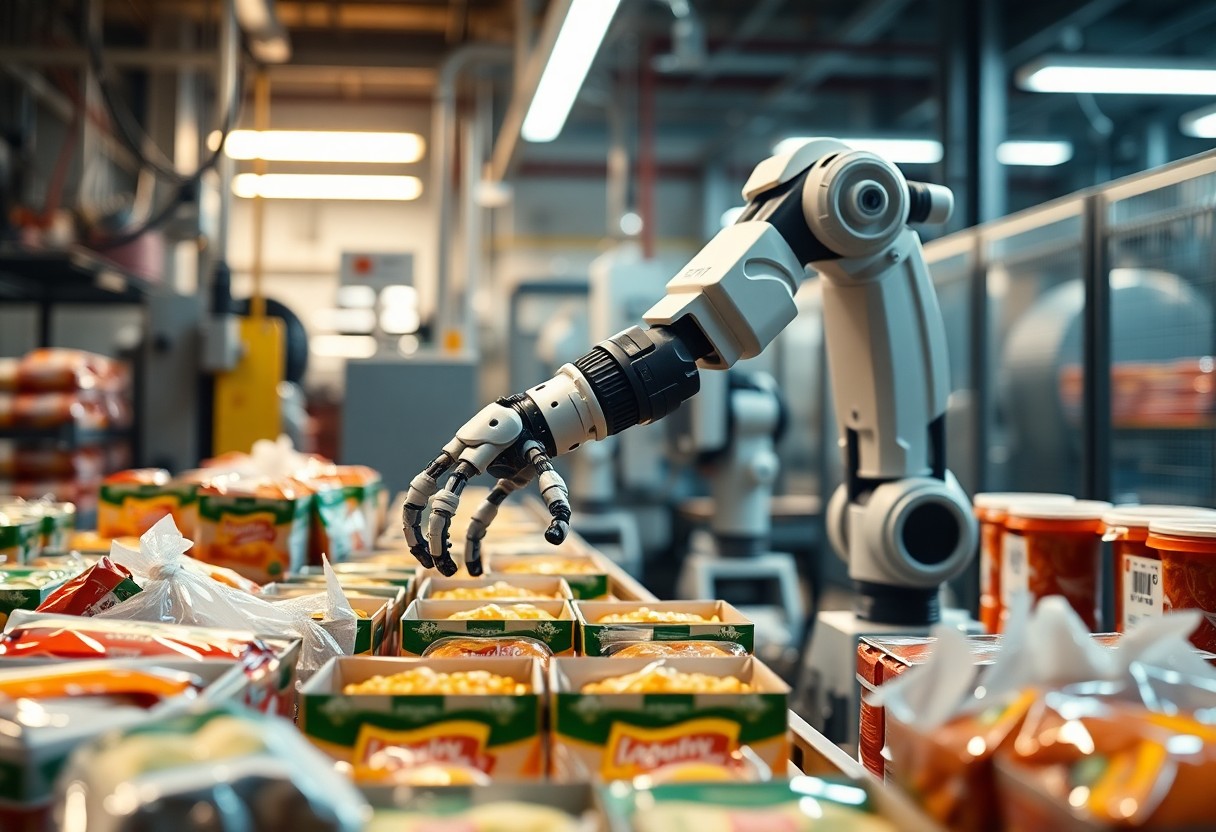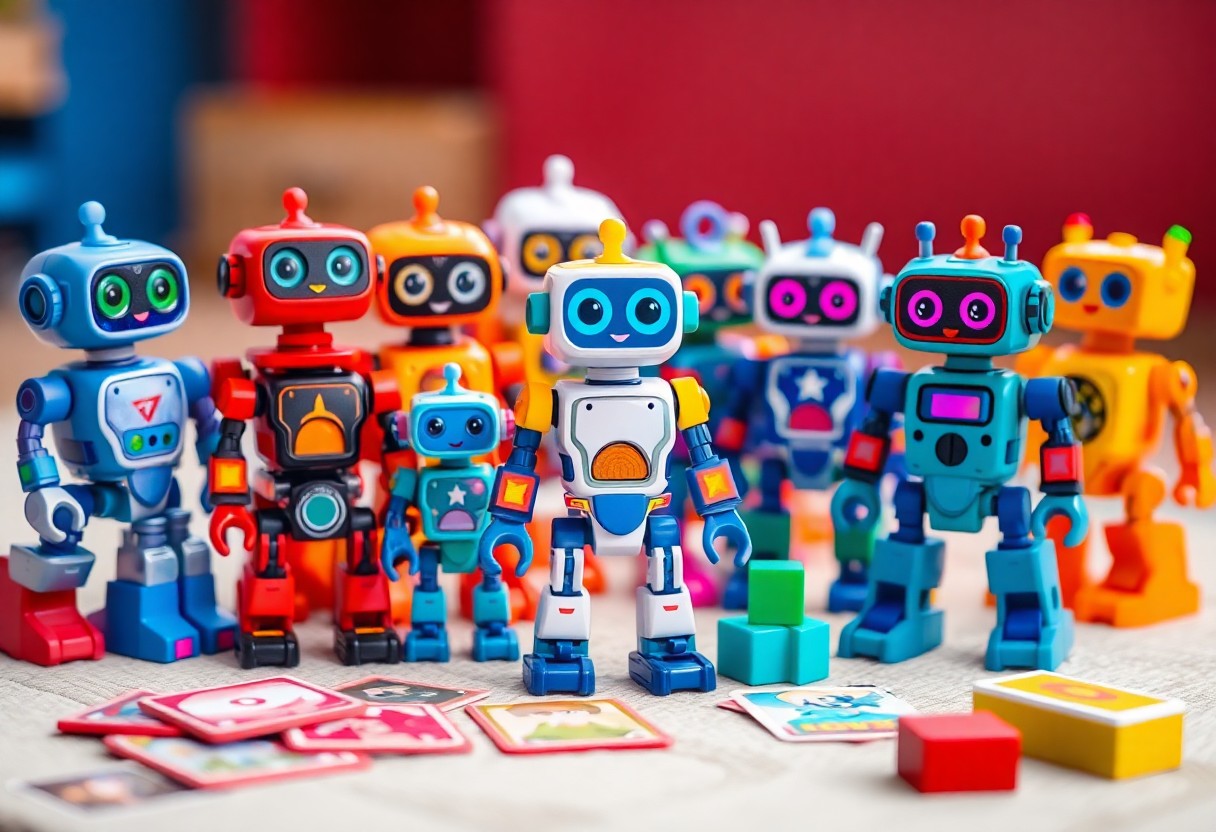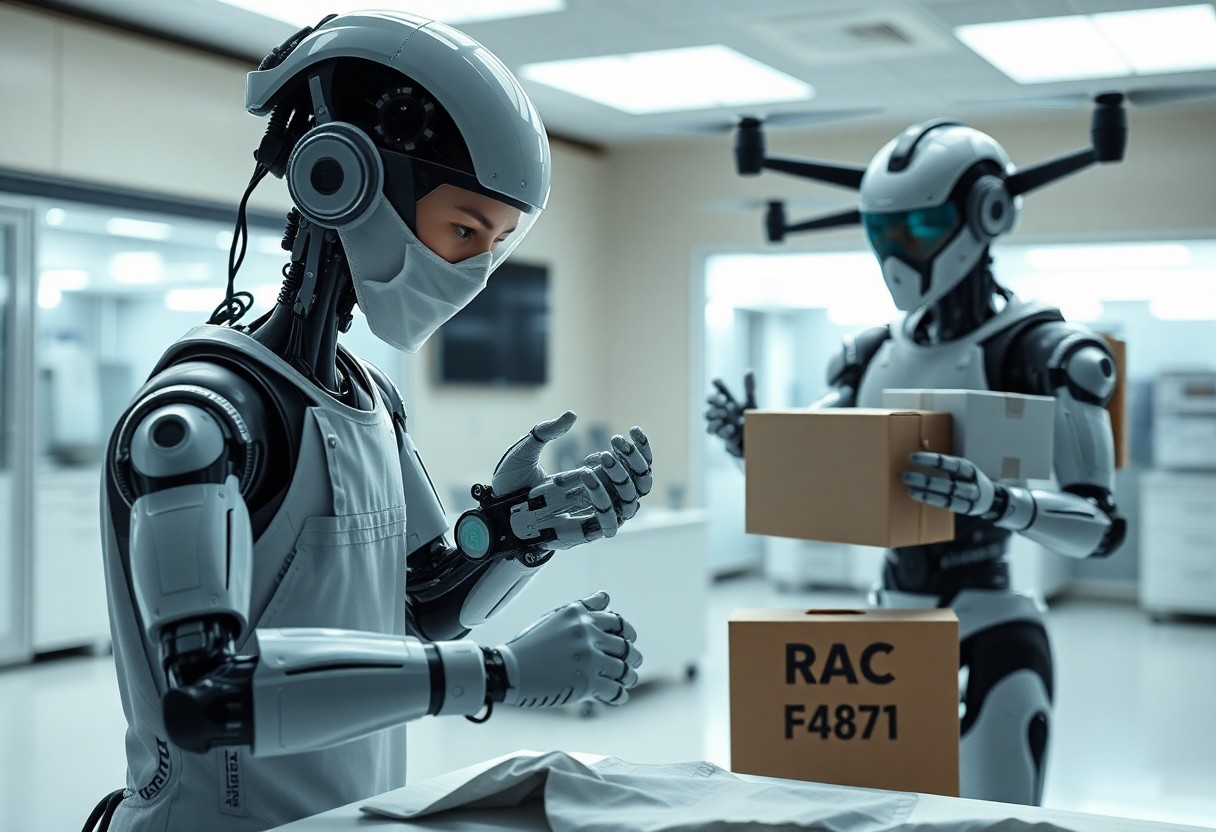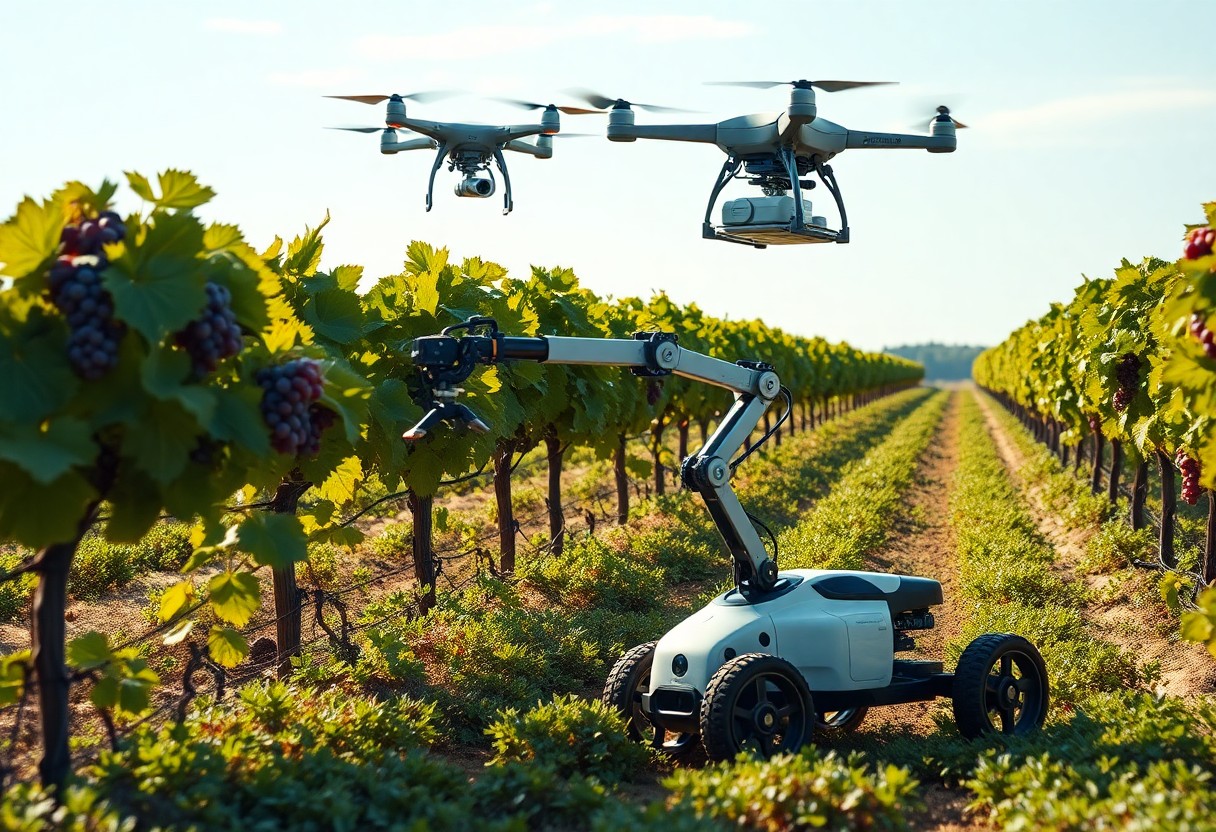You may be surprised to learn how robotics is transforming the food industry and packaging processes. With advancements in automation, robots streamline production, improve safety, and enhance efficiency, allowing you to produce high-quality goods consistently. From sorting and packaging to quality control, robotics plays a significant role in meeting the growing demand for speed and precision in food handling. This blog post will explore how these innovative technologies can optimize your operations and elevate your business in today’s competitive market.
The Role of Robotics in Food Production
Robotics is transforming food production with the integration of automation across various stages. These technologies enhance efficiency, reduce labor costs, and improve food safety. From planting to harvesting, robotic systems streamline processes, enabling higher yields and more precise operations. You can expect advancements such as drones for crop monitoring and automated machines that ensure consistent quality from farm to table.
Automated Farming Techniques
Automated farming techniques utilize advanced robotics to optimize planting, irrigation, and harvesting. Autonomous systems like drones and robotic tractors can analyze soil conditions, apply fertilizers with precision, and harvest crops. This technology significantly reduces the time and labor involved, making farming more efficient and sustainable.
Food Processing and Quality Control
In food processing, robotics enhance precision and consistency, pivotal for quality control. Automated systems monitor production lines, ensuring products meet safety and quality standards. This technology reduces human error and increases throughput, enabling manufacturers to maintain product integrity while scaling operations.
For instance, food processing plants are increasingly adopting vision systems combined with robotic arms to detect defects in packaging or inconsistencies in product appearance. These systems can operate 24/7, performing real-time inspections that enhance food safety protocols. By implementing automated quality control measures, you can significantly minimize waste, enhance productivity, and guarantee a higher standard of quality in your food products.
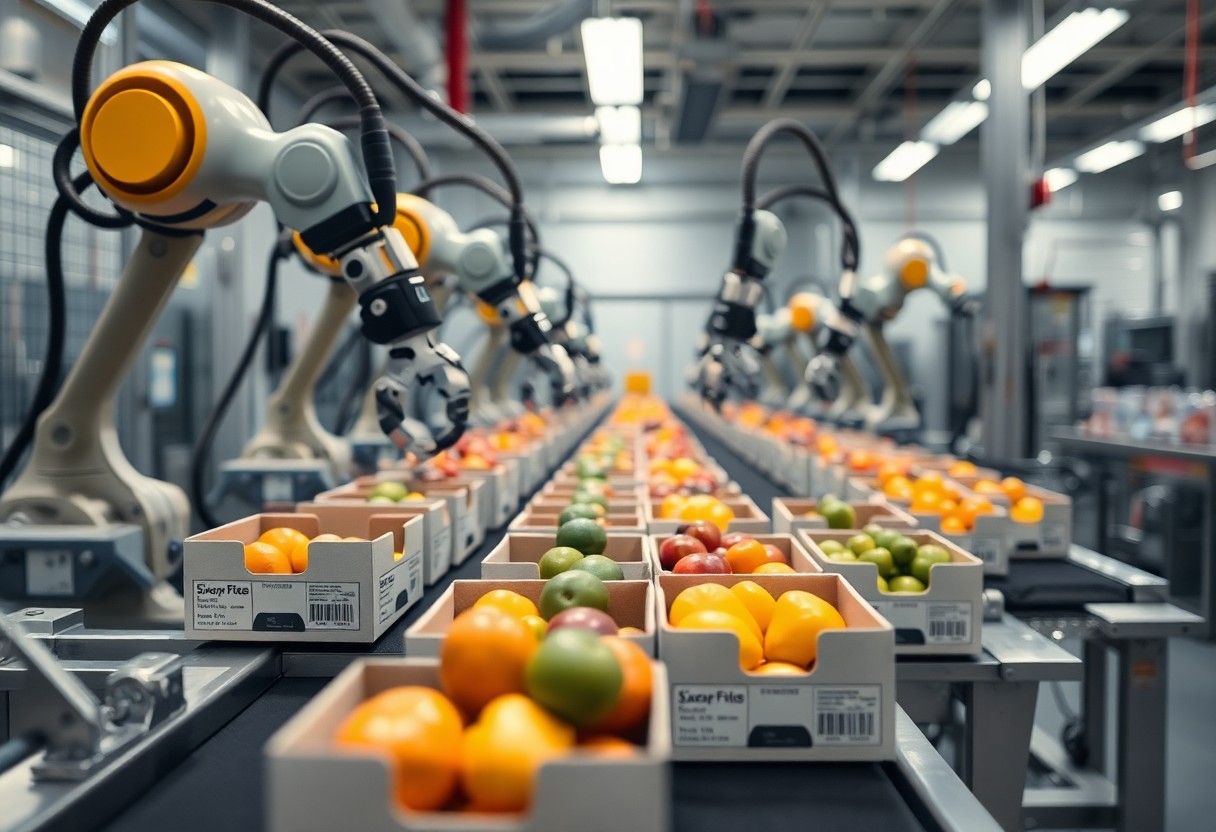
Robotics in Food Packaging
Robotics is revolutionizing food packaging by enhancing efficiency, accuracy, and safety. Automated systems streamline packaging processes, allowing you to increase production rates while reducing labor costs. For insights on implementations, check out the Top 20 Applications of Robotics in Food Industry.
Robotic Packing Systems
Robotic packing systems employ advanced algorithms and gripper technology to handle various food items with precision. These systems adapt to different package shapes and sizes, ensuring minimal damage during the packing process. With the ability to work around the clock, you can boost throughput while maintaining product quality.
Labeling and Palletizing Innovations
Innovations in labeling and palletizing use robotics to streamline workflow in your packaging operations. These systems can automatically label, sort, and arrange products on pallets with immense speed and reliability, significantly minimizing human error. Sophisticated sensors and machine learning algorithms enhance tracking and optimization.
The rise of robotic labeling and palletizing systems has dramatically improved operational efficiency. These machines ensure consistent labeling accuracy, reducing compliance risks in industries with stringent regulations. Additionally, integrated vision systems allow for real-time adjustments based on label placement and orientation, which optimizes your packaging line further. Automated palletizing reduces physical strain on workers while ensuring a stable and ergonomic stacking process. As a result, your supply chain benefits from reduced labor costs and increased safety.
Benefits of Using Robotics in the Food Industry
Integrating robotics into the food industry offers substantial advantages, enhancing overall operations and ensuring higher standards. By automating processes, you can reduce labor costs, minimize human error, and streamline production, allowing your business to respond more swiftly to market demands. The technology also enables consistency in product quality, helping you maintain your brand’s reputation while catering to an increasingly discerning customer base.
Efficiency and Productivity Gains
Robotics significantly boosts efficiency and productivity by performing repetitive tasks with precision and speed. You can observe remarkable reductions in production time, enabling higher output levels. For instance, a robotic arm can pack products three times faster than manual labor, allowing you to meet rising consumer demand without compromising quality. As a result, you can allocate resources more effectively and enhance your competitive edge in the market.
Food Safety and Compliance
Robotics enhances food safety and compliance by minimizing human contact, reducing the risk of contamination during processing and packaging. With precise, programmed controls, robots maintain hygiene standards, ensuring that your products meet regulatory requirements consistently. Automation also enables thorough tracking and documentation of processes, providing you with clear records that support compliance audits and quality assurance efforts.
Automated systems excel in developing stringent safety protocols, eliminating human factors that often contribute to food safety breaches. Using robotics, you can implement features like UV sanitation, temperature monitoring, and precise handling, all contributing to a safer product for consumers. In a climate where foodborne illness can severely impact your brand, leveraging robotics not only enhances safety but also builds customer trust and loyalty.
Challenges and Limitations
Despite the advantages, the integration of robotics in the food industry faces significant challenges that hinder widespread adoption. High initial investments, ongoing maintenance costs, and the necessity for skilled personnel create barriers for many businesses. Additionally, concerns about the adaptability of robotic systems in diverse production environments complicate seamless integration.
High Initial Investment
Implementing robotic systems requires substantial upfront investment, often in the hundreds of thousands or even millions of dollars. This expense includes not only the purchase of robots but also integration into existing processes and potential alterations to infrastructure. For smaller businesses, these costs can be daunting and may deter them from pursuing automation.
Skills Gap and Workforce Transition
A significant skills gap exists as robotics technology evolves faster than workforce training programs. Many employees lack the necessary technical knowledge to operate or maintain sophisticated robotic systems, leading to reliance on external specialists. This transition period often creates uncertainty and fear of job loss among the workforce, complicating the integration of new technologies.
As robotics become increasingly prevalent in the food industry, the necessity for upskilling existing workers grows. Training programs must be developed to equip employees with the skills needed to work alongside advanced automation. This involves not only technical training in operating machines but also fostering a mindset adaptable to technological change. Companies should invest in continuous education initiatives to alleviate fears and facilitate a smoother transition for their workforce, ultimately reinforcing job security while embracing innovation.
Future Trends in Robotics for Food Applications
Advancements in robotics are set to transform the food industry landscape. You can expect increased automation in food processing, enhanced precision in packaging, and improvements in safety standards. Robotics integrated with IoT will streamline supply chains, allowing for real-time monitoring and adjustments, ultimately leading to reduced waste and lower operational costs.
AI Integration and Smart Robotics
AI integration will redefine how robotics operates within food applications. With machine learning algorithms, robots can analyze data to optimize processes, predicting demand and adjusting production accordingly. This smart technology enhances efficiency and allows for more agile responses to market fluctuations, reinforcing your competitive edge.
Sustainable Practices through Automation
Automation facilitates sustainable practices by minimizing waste and conserving resources. You can leverage robotic systems that optimize ingredient usage and energy consumption, dramatically reducing the carbon footprint of your operations.
Through advanced automation, you can implement systems that precisely measure ingredient quantities, thereby cutting down on excess material use. For instance, precision robotics can reduce food waste in production by over 30%, allowing you to operate in a more environmentally friendly manner. Automated packaging processes can also utilize biodegradable materials and implement energy-efficient practices, further contributing to sustainability objectives. Adopting these innovative solutions not only enhances your operational efficiency but also aligns your business with global sustainability targets, appealing to environmentally conscious consumers.
Case Studies of Successful Implementations
Numerous companies have successfully integrated robotics into their food production and packaging processes, showcasing impressive efficiency and quality improvements. These case studies highlight the transformative impact of automation on various operational aspects.
- Amazon Fresh: Reduced order processing time by 30% using autonomous robots for order picking.
- McDonald’s: Improved food preparation speed by 25% with robotic fryers and grills.
- Sweetgreen: Enhanced salad preparation efficiency by 50% with automated assembly lines.
- Campbell Soup Company: Achieved a 20% increase in packaging throughput using robotic palletizers.
- Blue Apron: Lowered labor costs by 15% through the deployment of robotic arms in meal kit assembly.
Examples from Leading Companies
Leading companies in the food industry are pioneering the use of robotics to enhance productivity and ensure food safety. For example, Tyson Foods has introduced automation in their processing plants, significantly reducing human error and improving processing speed. Similarly, Nestlé has adopted robotic packaging solutions, which have increased their output by over 30%, reinforcing the competitive edge gained through technology.
Lessons Learned from Robotics Integration
Each successful integration of robotics in the food industry provides valuable insights for your future implementations. Adaptability is imperative—tailoring robotic systems to specific tasks can maximize efficiency. Additionally, employee training plays a crucial role in ensuring smooth transitions, as staff must understand how to work alongside these advanced technologies to fully leverage their capabilities.
Leverage your findings on lessons learned from robotics integration to avoid common pitfalls. Understand that careful planning and a phased approach ensure that your existing workforce is supported rather than replaced. Engaging employees in the transition process fosters a culture of innovation and improves acceptance. Ensuring continuous communication regarding the benefits of robotic technologies plays a significant role in optimizing performance, thus leading to sustained productivity gains. By addressing these aspects, you can facilitate a smoother transition into a more automated future.
Conclusion
Ultimately, the integration of robotics in the food industry and packaging enhances efficiency, consistency, and safety in production. As you adopt these advanced technologies, you can streamline operations, reduce labor costs, and improve product quality. By leveraging automation, you position your business for future growth and adaptability in a competitive market, ensuring that you meet rising consumer demands while maintaining high standards of service and sustainability.

